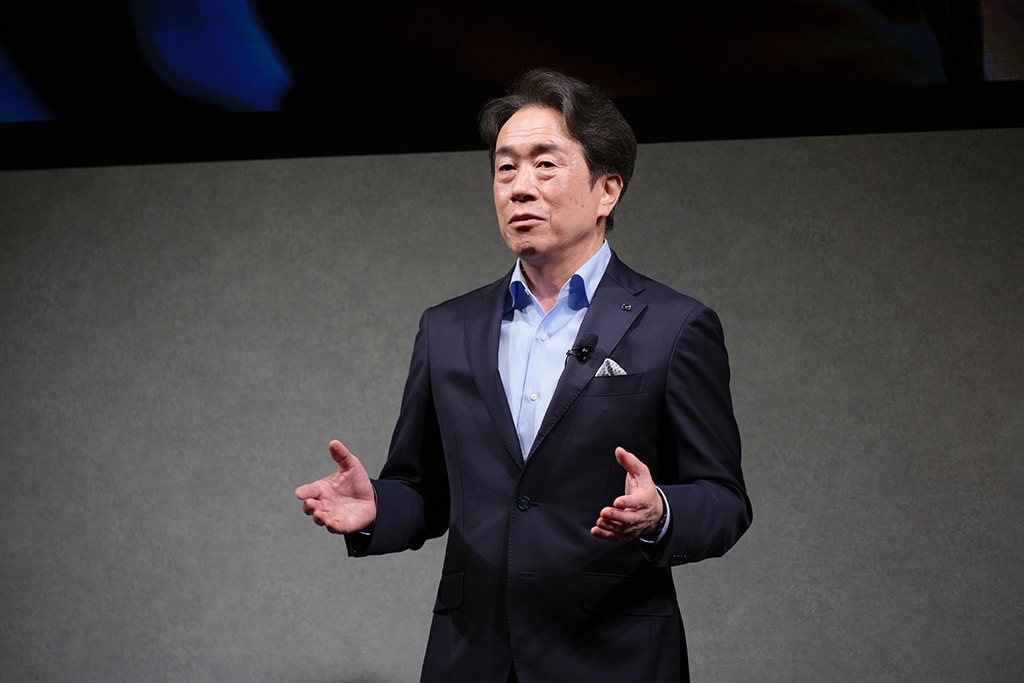Mazda to address era of electrification with new strategies
20 Mar 2025|165 views
At a Mazda Multi-Solution Briefing Session held in Tokyo, President and CEO Masahiro Moro, as well as members of his leadership team, announced three key components that will enable the company to address the electrification era through its 2030 management policies.
The first is the Lean Asset Strategy, which will see Mazda utilise existing assets and forming strong partnerships. Its aim is to maintain quality and maximise expertise while reducing costs in areas such as electric/electronical architecture, hybrid system, and battery and thermal management. This has already been successfully demonstrated through partnerships with brands such as Changan Automobile, Toyota, Denso, and BluE Nexus.
The second is the Mazda Multi-Solution Strategy, ensuring that the brand's vehicles are equipped with the most suitable powertrain options, be it ICEs, hybrids, or BEVs, that are tailored to different driving environments and customer needs.
Lastly, the third is the Mazda Monozukuri Innovation 2.0, in which Mazda will evolve its model-based development to improve flexibility, efficiency, and speed. By combining ICEs and electrification technologies, including BEVs, the brand aims to achieve significant operational efficiencies by 2030.
These strategies will be supported by three key innovations.
First up is the new SKYACTIV-Z engine, which will form the core of Mazda's lineup for small products in the electrification era. Combined with the brand’s in-house hybrid system, the engine will debut in the next-generation Mazda CX-5 in 2027. In addition, the SKYACTIV-Z also helps to reduce the number of engine units and control software, enhancing development and production efficiency.
Second on the list is Mazda's in-house developed platform for BEVs, which will be highly flexible on both hardware and software, allowing for various battery types and vehicle models. Mazda has also announced that its new BEV - set for 2027 - will be produced in Japan, with its battery cells developed in collaboration with Panasonic Energy Corporation.
The last key innovation mentioned is the Evolved Production Technology, in which Mazda's existing mixed-flow production line, enhanced by Monozukuri Innovation 2.0, will also be used for BEVs, reducing initial capital investment by 85% and preparation time by 80% as compared to new plant construction. Additionally, Mazda's innovative approach to software procurement and Factory over-the-air technology will significantly reduce inventory in the supply chain.
Mazda believes that these innovations will ensure its continued commitment to providing its customers with cars that are pleasing to drive in the future.
At a Mazda Multi-Solution Briefing Session held in Tokyo, President and CEO Masahiro Moro, as well as members of his leadership team, announced three key components that will enable the company to address the electrification era through its 2030 management policies.
The first is the Lean Asset Strategy, which will see Mazda utilise existing assets and forming strong partnerships. Its aim is to maintain quality and maximise expertise while reducing costs in areas such as electric/electronical architecture, hybrid system, and battery and thermal management. This has already been successfully demonstrated through partnerships with brands such as Changan Automobile, Toyota, Denso, and BluE Nexus.
The second is the Mazda Multi-Solution Strategy, ensuring that the brand's vehicles are equipped with the most suitable powertrain options, be it ICEs, hybrids, or BEVs, that are tailored to different driving environments and customer needs.
Lastly, the third is the Mazda Monozukuri Innovation 2.0, in which Mazda will evolve its model-based development to improve flexibility, efficiency, and speed. By combining ICEs and electrification technologies, including BEVs, the brand aims to achieve significant operational efficiencies by 2030.
These strategies will be supported by three key innovations.
First up is the new SKYACTIV-Z engine, which will form the core of Mazda's lineup for small products in the electrification era. Combined with the brand’s in-house hybrid system, the engine will debut in the next-generation Mazda CX-5 in 2027. In addition, the SKYACTIV-Z also helps to reduce the number of engine units and control software, enhancing development and production efficiency.
Second on the list is Mazda's in-house developed platform for BEVs, which will be highly flexible on both hardware and software, allowing for various battery types and vehicle models. Mazda has also announced that its new BEV - set for 2027 - will be produced in Japan, with its battery cells developed in collaboration with Panasonic Energy Corporation.
The last key innovation mentioned is the Evolved Production Technology, in which Mazda's existing mixed-flow production line, enhanced by Monozukuri Innovation 2.0, will also be used for BEVs, reducing initial capital investment by 85% and preparation time by 80% as compared to new plant construction. Additionally, Mazda's innovative approach to software procurement and Factory over-the-air technology will significantly reduce inventory in the supply chain.
Mazda believes that these innovations will ensure its continued commitment to providing its customers with cars that are pleasing to drive in the future.
Latest COE Prices
September 2025 | 2nd BIDDING
NEXT TENDER: 08 Oct 2025
CAT A$119,003
CAT B$136,890
CAT C$72,501
CAT E$140,502
View Full Results Thank You For Your Subscription.























